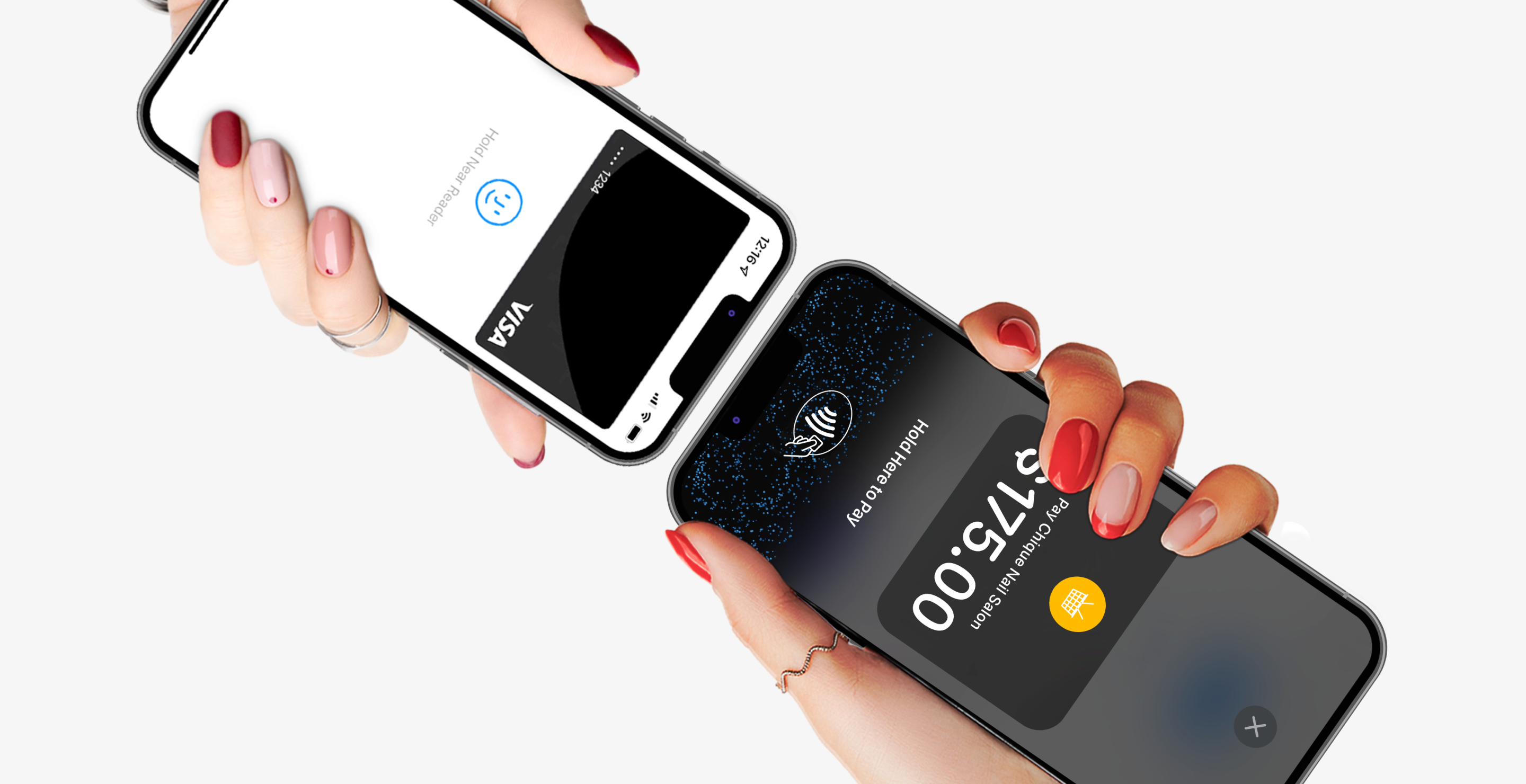SoftPOS, also known as "tap-to-pay" and "pin-on-glass," has been touted for years as the future of face-to-face payments, with the promise of transforming how businesses accept payments by eliminating the need for payment hardware. Ten-plus years since the technology was first created, the question remains: Has SoftPOS truly arrived, or is it still awaiting its breakthrough? In this article, we examine the foundations of SoftPOS, assess its development vs. expectations, and explore growth headwinds.
What is SoftPOS?
Simply put, SoftPOS is a software-based application that allows non-payment devices, like smartphones or tablets, to accept card-based payments. This technology emerged from advancements in Near Field Communication (NFC), mobile operating systems, and cloud-based payment processing. Initially, mobile payment acceptance depended on hardware-based POS systems or attachments, such as dongles connected to smartphones. However, as NFC technology became more prevalent in smartphones and tablets (as seen with mPOS devices like Zettle and SumUp), it paved the way for software-only POS solutions, eliminating the need for additional payment hardware.

In Figure 2 below, we outline the key distinctions between SoftPOS, mPOS, and traditional payment devices. In simple terms, the main distinctions between SoftPOS, mPOS, and traditional POS terminals are in their hardware requirements and flexibility. Traditional POS terminals are specialized hardware solutions built around payment features and security, with mostly one purpose in mind. mPOS technology innovated by payment devices by further thinning the needs of the payment device by leaning on connected mobile phones for communication and more advanced features (via a mobile app). SoftPOS goes a step further, removing the need for a payment device entirely. It relies solely on technology either native to mobile phones or delivered via a mobile app and corresponding payment host. By eliminating the need for a specialized device, SoftPOS offers clear ease of use and incremental cost advantages.

Users of SoftPOS
Early adopters of SoftPOS in Western markets (North America and Europe) are mostly small and micro businesses. These businesses are cost-sensitive, complexity-averse, and tend to be operated via the owners’ mobile device. SoftPOS providers can equip these merchants with the ability to accept payments almost instantly, offering a flexible and cost-effective solution. This is especially beneficial in sectors where mobility is a premium and where commerce interactions are already app-based. Note that this general persona fit also takes us beyond small/micro businesses and into corporate verticals such as gig platforms, transportation, and field services. Figure 3 highlights industries and use cases where SoftPOS is making a notable impact.

SaaS platforms with embedded payments are also a segment where we see early adoption of SoftPOS. These SaaS companies, or ISVs, are keen on SoftPOS as a means to eliminate the need for a second payment device. POS ISVs already provide or operate via commerce-enabling hardware (tablets, desktops, etc.), so having a second or third hardware domain (payments devices) complicates their lives materially. Many ISVs, particularly those in less volume-intensive verticals (beauty, field services, etc.) want to simply enable their existing devices for payment acceptance. As mobile payments continue to gain momentum, the synergy between SoftPOS and SaaS is set to transform how businesses manage their operations and process payments. These partnerships promise a more flexible and cost-effective future, empowering businesses to streamline their processes while offering seamless payment experiences.
Providers of SoftPOS
SoftPOS is not yet disruptive in scale, but most of the top merchant PSPs in Western markets are now actively marketing the product, a clear indication that we are on the precipice of real scale. As shown in Figure 4 below, we analyzed the top 50 merchant PSPs in Europe and North America, and determined that 72% of these PSPs are actively marketing SoftPOS while 28% are not yet marketing SoftPOS.

The scaling of Apple’s Tap-to-Pay rollout is another indicator of SoftPOS’ scaling curve. As shown in Figure 5, Apple now has more than 100 active or in-flight solution/GTM partners, up 63% from last year (with 3 months remaining in the calendar year). Note that Apple’s approach to SoftPOS enablement is fundamentally different from Google’s (Android’s) approach as Apple directly wholesales a closed platform to merchant payment service providers, while Google provides an open (more or less) capability set to the market, allowing innovators to build product with these capabilities.

Growth Challenges
SoftPOS is a significant advancement of payment technology, offering merchants an ultra-easy and low cost way to accept face-to-face payments. However, its journey toward mainstream adoption has been slow, given the birth of the concept in 2012. Several factors contribute to the slow growth vs. potential:- Trust and education: merchants oftentimes, still need to get comfortable that SoftPOS is safe and effective relative to the terminals or mPOS solutions they are used to using.
- Device compatibility: Not all smartphones or tablets are equipped with the necessary NFC technology, limiting the pool of compatible devices for SoftPOS solutions.
- Integration and investment: Integrating SoftPOS into existing business systems can be complex and costly. Many businesses have already invested in traditional payment infrastructure and may not see an immediate benefit in switching to SoftPOS.
- Limited awareness: SoftPOS technology remains relatively unknown to many small businesses, and its adoption might require a “crowd effect” to gain momentum across markets.
- New to business: New businesses are more likely to adopt SoftPOS, but overall penetration remains slow, as new businesses represent only a tiny fraction of the total merchant base today.
- Security standards: SoftPOS faces ongoing challenges in ensuring consistent security standards across various devices and operating environments. Meeting regulatory requirements and building consumer trust are critical areas that still need to be addressed.

The Certification Journey: MPoC Enabling Market-Wide Readiness
SoftPOS evolved through several technical standards milestones, with the latest iteration, MPoC (2022), addressing the major limitations of earlier versions. The first standard, SPoC (2018), allowed PIN entry on a COTS (Commercial Off-The-Shelf) device but still required a separate card reader to accept payments, offering minimal advantages over mPOS devices like Zettle or SumUp. The subsequent CPoC standard (2019) enabled card-reading directly on the COTS device but did not allow for PIN entry, limiting transactions to those that didn’t require a PIN (i.e. low-value payments). The introduction of the MPoC standard (2022) was a game-changer, as it enabled both card reading and PIN entry on the same COTS device, addressing key security concerns and significantly broadening the appeal and use of SoftPOS solutions across Europe. This progression has laid the foundation for wider adoption. Figure 7 compares the evolution of these standards.

The Future of SoftPOS
Despite some ongoing growth headwinds, the future of SoftPOS in Europe and North America continues to look promising. We have no doubt that scale is coming given the marketing prevalence across leading PSPs, the clear and compelling value proposition, and the rising visibility in our day-to-day lives. SoftPOS technology and the advantages it brings (low cost, ease of use, real-time enablement, etc.) are simply too compelling to be held back indefinitely.
As with any innovation, SoftPOS requires bellwethers to drive the herd toward mass-market adoption, and the market seems to be waiting for these leading case studies to be more visible (e.g., we are now seeing it more regularly within field services, weekend markets, etc.). We believe it is only a matter of time before SoftPOS becomes a mainstream payment acceptance tool in North America and Europe, focused around certain merchant segments and use cases where the utility of stand-alone devices are less consequential.
Please do not hesitate to contact Yuriy Kostenko at Yuriy@FlagshipAP.com or Elisabeth Magnor at Elisabeth@FlagshipAP.com with comments or questions.



